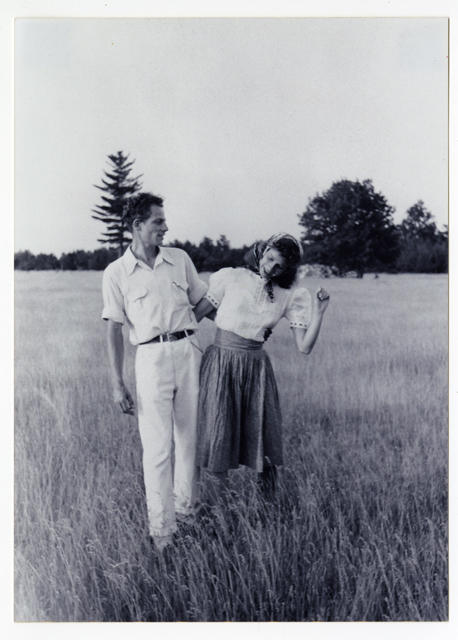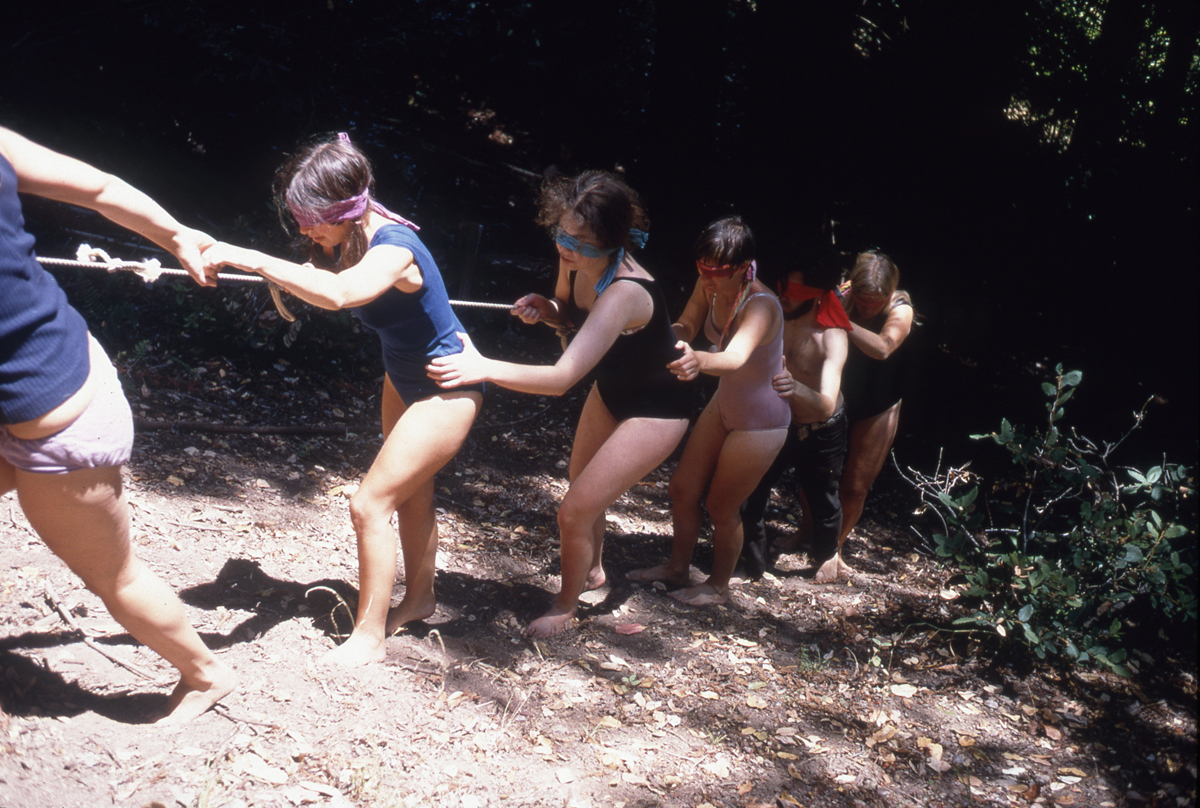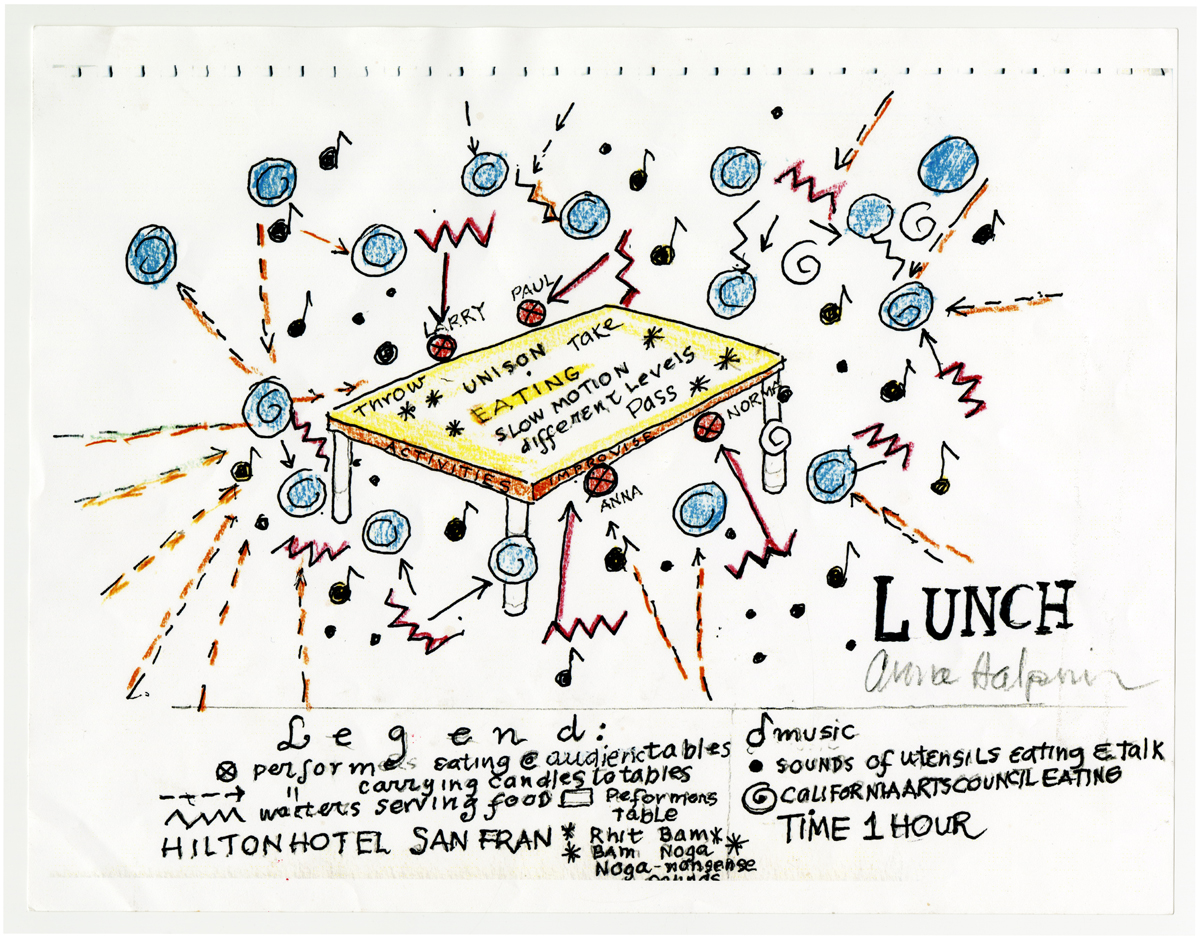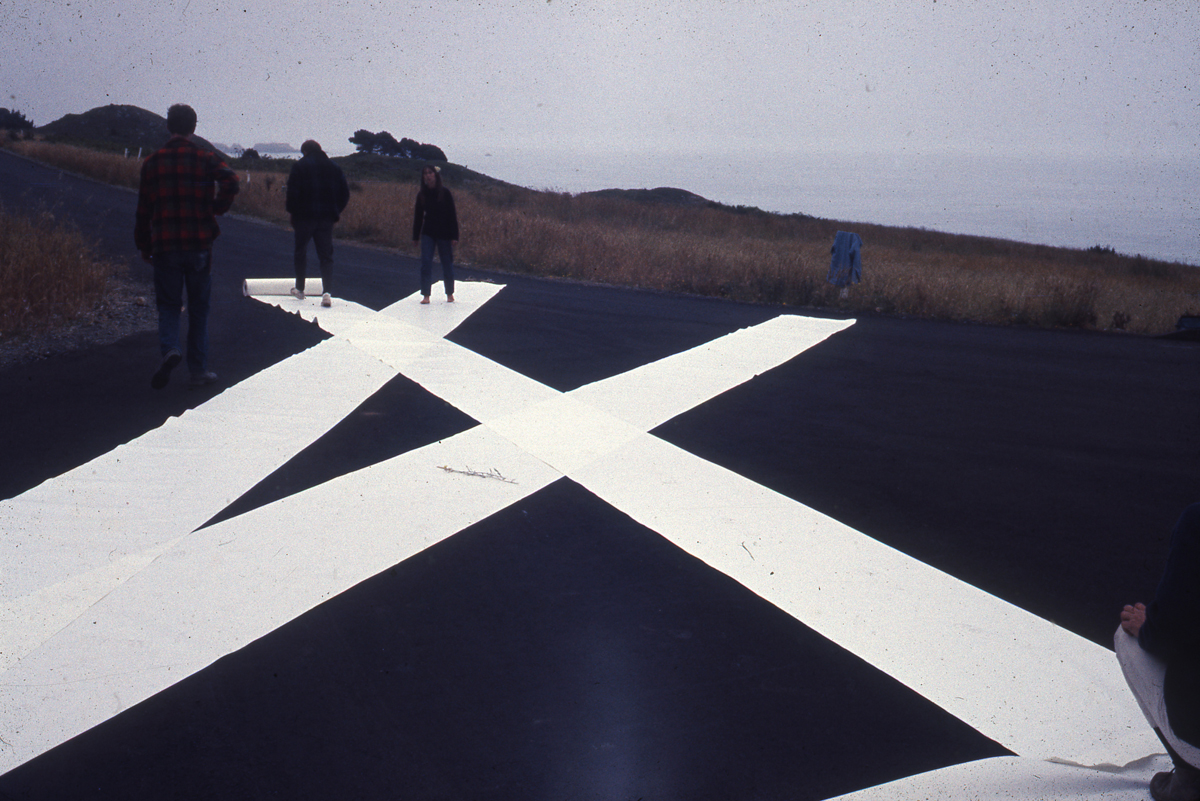In the Venn diagram of dance and architecture, one might think the two circles have very little overlap. But in 1966, dance pioneer Anna Halprin and her husband, landscape architect Lawrence Halprin, sought to intermingle the two in an experimental summer workshop for students of both disciplines. The workshops, led by the couple three times over the next five years, are captured in an exhibition of photographs, ephemera, video and drawings at San Francisco’s California Historical Society. Originally exhibited at the Graham Foundation in Chicago, Experiments in Environment: The Halprin Workshops 1968-1971 brings its cross-disciplinary lesson plan back to the region of its own making.

The couple’s “Experiments in Environment” were investigations into urban and natural environments and ways in which bodies move through them. Today the workshop descriptions set off all the buzzword alarms for new-agey, cringeworthy language, but the activities — from blindfolded walking to collective building projects to dances choreographed for city plazas — remain radical.
In fact, the current exhibition at the CHS inspires a not immodest amount of jealousy. While expanding notions of dance, architecture, community and environment, workshop participants had what looks like a hell of a lot of fun.
Those participants for the most part appear to be young, handsome architecture students, budding artists and dancers. A vitrine filled with applications from workshop hopefuls is priceless, including a letter from a 24-year-old Chip Lord, who would become known as one of the founders of the collective Ant Farm, “court jesters of the Bay Area video arts scene” in the 1970s.
“I feel that this experience will make clear personel (sic) concepts which have been clouded or repressed by inexperience and professional school rigidity,” Lord writes in his appeal.

Another letter from a 32-year-old Joan Jonas (who went on to have her own star-studded career, most recently as the United States’ representative at the 2015 Venice Biennale) says, “I hope there is still room.” Based on the exhibition’s list of 1968 workshop participants, she didn’t make the cut.
The 1968 workshop is the most thoroughly represented in the material on view at the CHS. From July 1-24 of that year, 20 dancers, 14 architects and 8 faculty members moved between San Francisco, the Halprins’ home in Kentfield and the Sonoma coastal community at Sea Ranch (which Lawrence Halprin designed). The 24 days were filled with exercises like “Sensory Walk,” “Ritual Group Drawing” and “Manipulating Bodies.” At the CHS, a large-scale horizontal sepia print Score for a 24-Day Workshop details the complete daily activities of the group, filled from morning to night.

Nearby vitrines contain the Halprins’ “scores,” directions for activities that are both specific and open-ended, providing participants with comfort-zone expanding guidelines for exploring their surroundings.
Some scores are theatrical. “Skyscraper Event” tells participants to travel between two San Francisco skyscrapers with an adopted personality. “Interact with the people in these buildings,” the score says. “Notice how you experience the environment and the people you contact.”
Other scores look inwards. “Sensory Walk” decrees: “Focus on each sense isolated from the others long enough so you are really digging it with that one sense before using the next sense.”

Is the cringeworthy buzzword alarm ringing? Shed for a moment preconceived notions of aimless wandering and “finding oneself” in the assembly of a driftwood city (another all-day workshop activity). The Halprin workshops were part of a movement too often distilled down to Timothy Leary’s misunderstood exhortation to “Turn on, tune in, drop out.”
An accompanying display of material from the CHS’s collection gives context to the era through a number of countercultural artistic and lifestyle movements, including objects relating to the Diggers, the Kaliflower Commune, Crossroads Community (The Farm), the Black Panther Party and the Free Speech Movement.
The Halprin workshops, as demonstrated throughout the exhibition, were highly organized, carefully crafted learning environments that purposely abandoned classrooms, tangible outcomes and professorial authority.
The radical “transformative” effect of this approach was felt by even the organizers. Lawrence Halprin, in his own evaluation of the 1968 workshop, wrote, “I, once again, believe deeply in process.”
Experiments in Environment: The Halprin Workshops 1968-1971 is on view at the California Historical Society in San Francisco through May 1, 2016. For more information visit experiments.californiahistoricalsociety.org.